The wood I like best for cleats, snotter thimbles, and parrel beads is locust, and I get all I need for free by the side of the road after a wind storm. Making the first cuts on the bandsaw used to be the part of the process that made me rather nervous.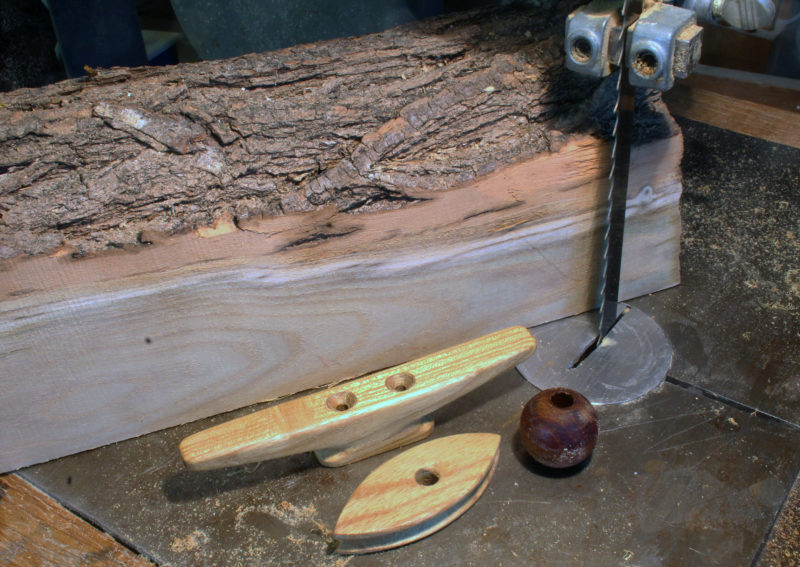 photographs by the author
photographs by the author
Join The Conversation
We welcome your comments about this article. To include a photo with your remarks, click Choose File below the Comment box.

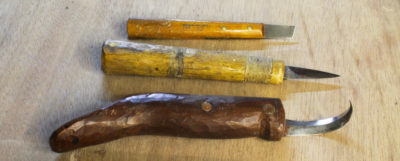

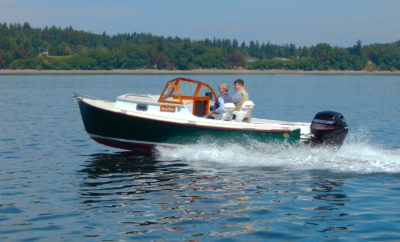
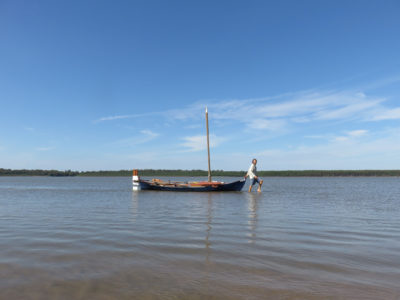


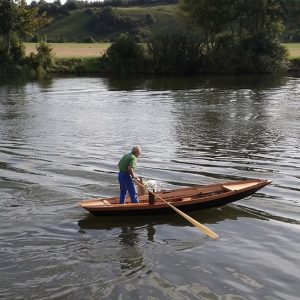
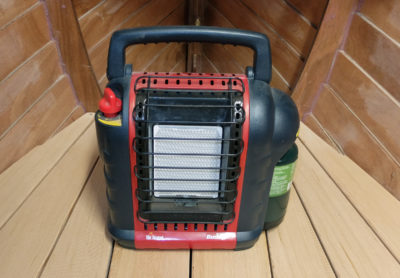
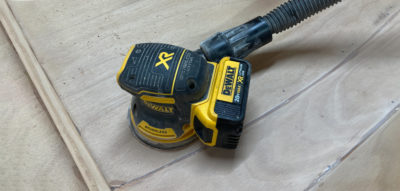

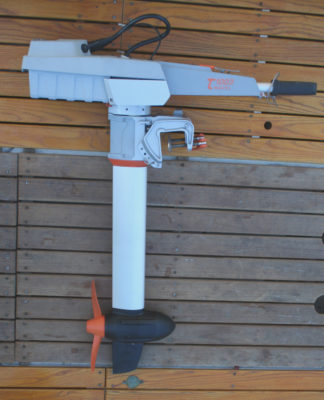
May I suggest a riser block kit for your bandsaw? Allows me to slowly resaw 12″ material under the upper blade guides on my 1947 Delta Milwaukee bandsaw.
I have a riser block on one of my old 10″ bandsaws, but haven’t installed one on my 14″ bandsaw. It would indeed increase the capacity, but I don’t often need to mill really thick stock.
Great idea, which I will copy, thanks. I have to ask though, if you do this often in sizes that necessitates removing the blade guide why not make a new guide to fit where that piece of wood is? Check your local bearing factor for miniature bearings, they are cheap and come open, shielded or sealed.
I’d given some thought to making a complete blade guide that I could tuck inside the upper wheel housing, and had even pulled some bearings out of an old roller-blade wheel with that in mind, but as you note, the bearings have to be rather small to fit the space. With a sharp blade and a slow feed the arrangement I have seems sufficient for the occasional milling I do and the size of much of the wood I collect. I’d take the time to make a new guide if I needed to mill a lot of stock for some reason. I currently have to remove the bit of hardwood to restore the clearance for the blade guard that’s attached to the normal blade guide. I’d have to modify the guard if I had a permanent guide inside the housing.
Worked in the boat-building industry since late ’60s, seen many inventive ways of getting the job done using what was available. Good work, keep it safe.
Very interesting concept. I’ll keep this idea for a time when I may need it. Gathering driftwood is not something I thought of doing here in Florida.
Brilliant! Great idea, Christopher. If I find anything particularly tasty I will come knocking!
Hi, Christopher.
What a great idea! How long are the pipe clamp and the base? What would be a safe maximum size….3ft?
Thanks,
Bryan (It is thawing now here in Ottawa.)
The sled in the article is 28″ long and its pipe clamp about 36″ long. I recently made a smaller sled, 21″ long, that uses a bar clamp. The holes in the wooden blocks have a snug slip fit on the bar. The two sleds are long enough to serve my purposes but I suppose a 36″ sled would be as large as I’d go. A bandsaw table isn’t very big, so I think it would be awkward to support a sled by hand when only a few inches are engaged in the miter slot. An infeed support roller would help.
One of our readers was having trouble finding the pipe clamp I used—it was designed to be used as a clamp and a spreader so the tail end was threaded and could be screwed on facing either in or out. The screw fixture was adjustable along the length of the pipe. Pipe clamps where the tail is the adjustable fixture are more common. If that’s the kind of pipe clamp used, the screw end would be on the outside of the sled. The tail would go either outside of the block or in between them.
Thanks very much, Christopher…..now to make it happen!
Bryan
After reading about your log sled, I built my own featuring the Jorgensen (although it’s a Bessey equivalent) Pony clamp that you put to such simple but effective use on your jig. The majority of YouTube versions of bandsaw log mills require the log to be fixed with various screws to hold it steady, but seeing your original video was a lightbulb moment for me!
My version is a development of what you made insomuch as I can adjust the clamp through x, y & z axis to accommodate any size of log up to 15” x 10” x 10”. This negates having to re-fix the work after each cut unless I want to change the orientation of the piece. It runs on an aluminum T-bar which runs in the table’s left-hand T-slot as this to me, is a safer and more stable approach with the cut pieces being expelled off to the right and away from the blade. I milled the aluminum T-bar on my router table which was fun. I am pleased with the end result.
Thanks again for your input on the clamps which was the key to pursuing this jig.
Hi,
Cool project, thanks for inspiration!
I’m learning how to use AutoDesk Fusion 360 and I used this as inspiration for my first CAD model 🙂
It’s very basic, but thought I’d share in case anyone else is interested: Bandsaw Log Jig
Hi,
Great idea. To realize your project I searched for an appropriate clamp. Unfortunately I could’t find it. Could you give me a clue, where I can buy it.
Thanks in advance,
Horst
I found the pipe clamp you used in the article, the one with a screw-in tail stop online. It is a # 56 Pony clamp.
Thanks